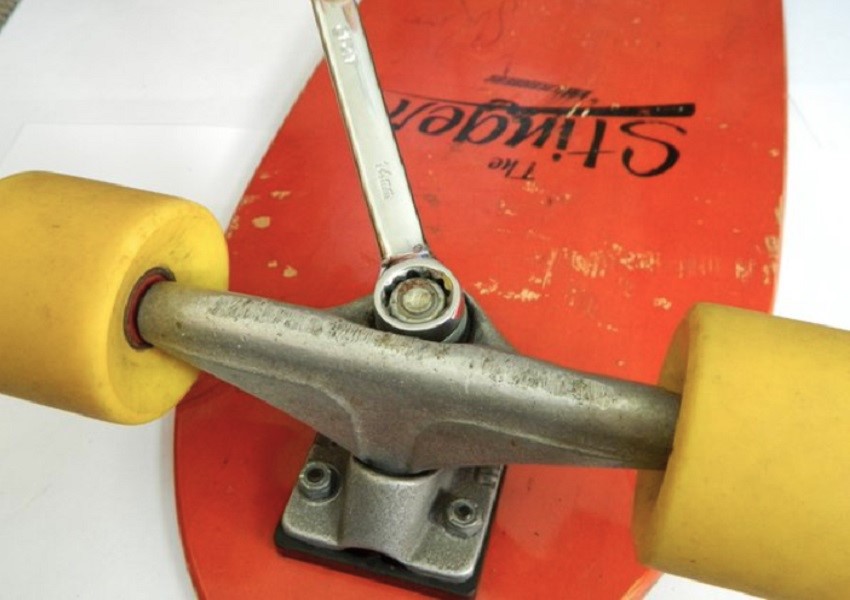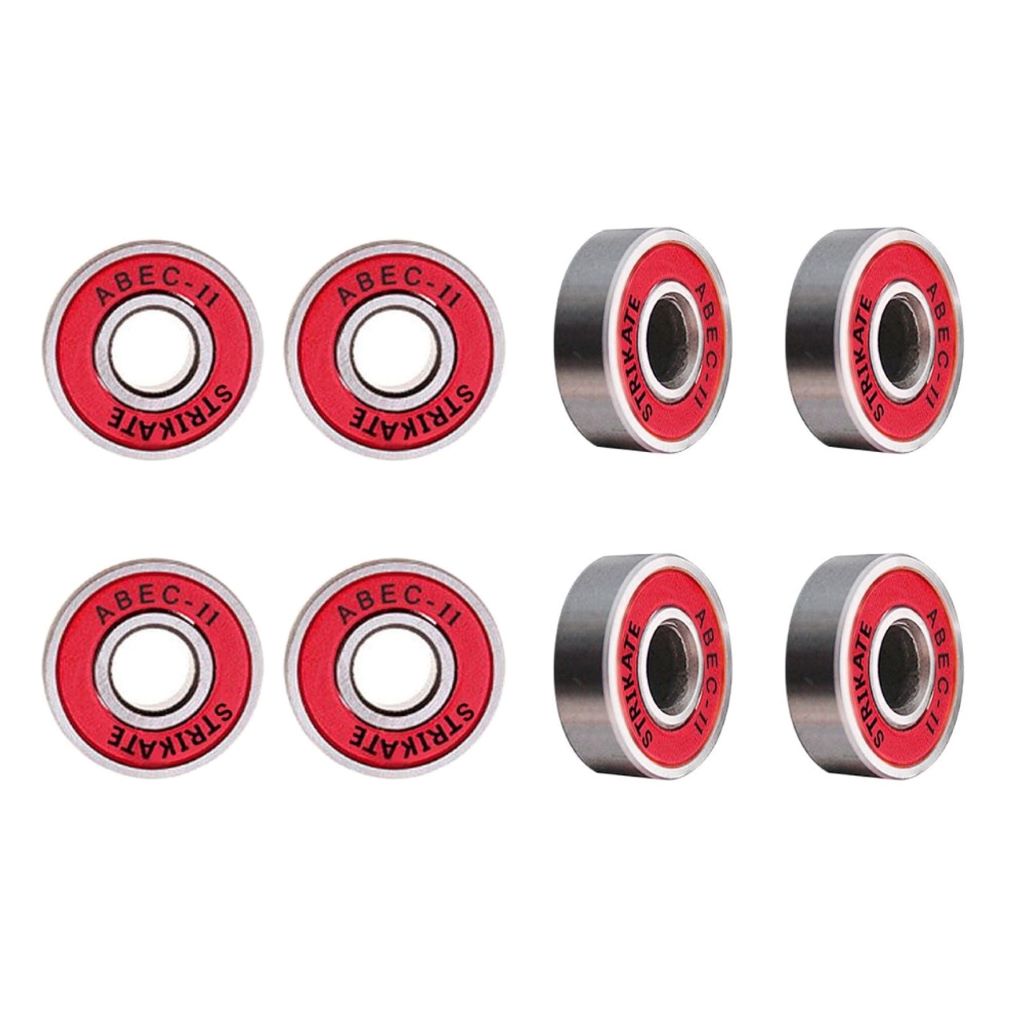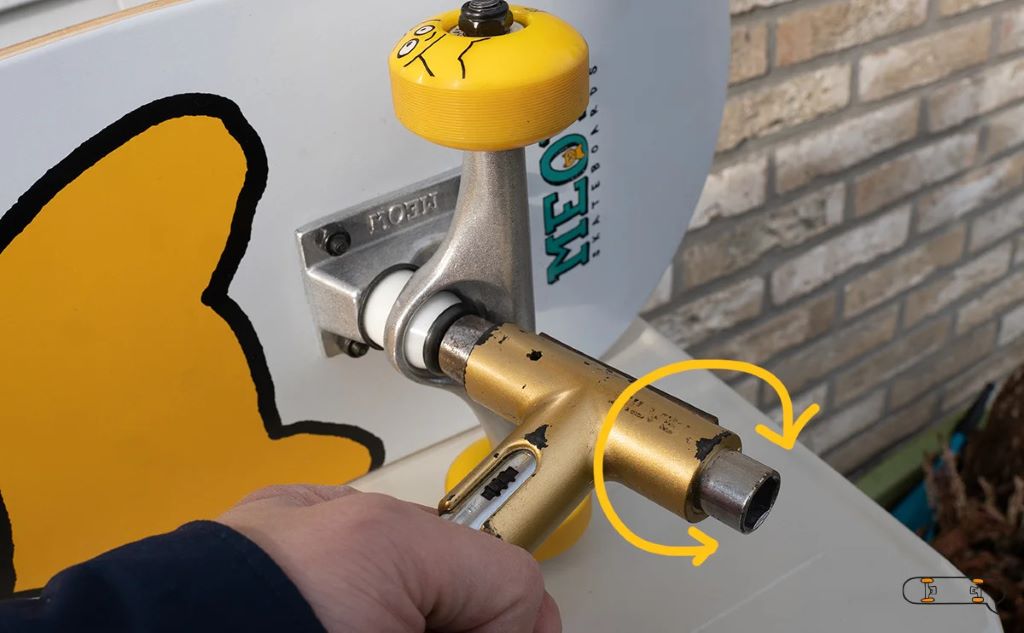You’ve probably heard of Wheelbite. Heck, you probably are having problems with it now.
So how do you prevent wheel bite? One way to prevent wheel bite is by applying a set of riser pads to your skateboard. These are a standard accessory that gives the extra distance between the board and wheels. This is one of the best ways to stop pesky wheel bite, there are other alternatives you will be interested in learning about too.
Riser pads don’t work for everyone, myself included. Follow along with me as I reveal some of the alternative strategies for beating wheel bite.
What Is Skateboard Wheel Bite?
Skateboard Wheel bite is caused when wheels rub against the base of your skateboard deck. Generally caused by sharp turns and the impact on your skateboard. This can happen while cruising, or even worse…when you land a kickflip down a 10 stair only to be suddenly stopped. For me, I typically ride stiff trucks to avoid this, even then it still occurs.
Solutions To Prevent Wheel Bite Forever!
Ever been cruising down the street and taking a slight turn on your board stopping for a mysterious reason? Or landing a trick you stall out. Maybe you’re wondering what those marks under your wheels are on your board. Well, my friend, this is what you refer to as wheel bite. It’s a problem almost every skater deals with.
Adjusting Your Trucks
Adjusting your trucks slightly tighter can be the solution if you’re not fond of using riser pads. Sometimes risers add too much height or change the board feel. They provide added pop as they give more distance between the tail and the ground surface. If your trucks are already loose, you’re probably satisfied with how they feel. Risers would be a good option at this point.
You have a preference on how you like trucks to feel. I enjoy a medium truck feel. This makes it easier to land tricks, especially down stairs, or gaps. It took me a while to find my happy medium, don’t be afraid to mess around adjusting your trucks.
Of course, you’ll find your ideal ride feel as time goes on. If you’re not sure, adjust trucks a quarter turn, to help fine-tune the settings. This also helps if you are looking to start skating looser trucks.
*You might not experience wheel bite as frequently if trucks are already tight.
Riser Pads Can Prevent Skateboard Wheel Bite
This is an option some would recommend if you’re not comfortable adjusting your trucks. You’re probably already set on how you like your board to feel. Risers can be a great option as they come in a variety of different heights. They normally are made from plastic but have foam shock absorbers as an option too. Skaters, such as myself feel risers affect ride quality or board feel.
When I first started skating, I thought riser pads were only meant to prevent pressure cracks. This is true but it also provides extended distance from the board and wheel…which prevents wheel bite. Duh! I never really used them, but if you skate tight trucks, or tighten your bolts in too tight, be aware of future pressure cracks!
Most Importantly, they absorb shock from the impact which causes the hardware to become loose over time. I cannot tell you how many times I’ve had bolts come loose, falling out without notice causing me to constantly have to buy hardware. Make sure to buy the right hardware to fit your new setup.
Riser Size And bolt selection:
1/8″ Riser – 1″ to 1 1/8″ hardware
1/4″ Riser – 1 1/4″ hardware
1/2″ Riser – 1 1/2″ hardware
I’d stick to just a normal ⅛” Riser for a typical board. Be aware of how tight you have your hardware. Having them on too tight can cause risers to crack or split over time. Shorter hardware will have you make the mistake of tightening and snapping hardware.
Waxing Under Wheel Wells
Not interested in inserting riser pads or adjusting your trucks? That’s fine. This method I use a lot, and I think it’ll help you out too. Simply put, applying wax on the wheel wells where the wheel bite occurs can act as a kind of lubrication, this is a temporary fix as the wax does wear off.
You’re going to find yourself in a pinch, and not having proper wax available. Just stick to something like a candle, even birthday candles work (in a pinch) Whatever you do, don’t use soap as it causes a mess and is extremely slippery.
Wheels Too Big For Trucks
Skateboard trucks come in different shapes and sizes. Typically if your trucks are lower profile, smaller wheels are mandatory. The mid profile is usually the standard 52-56mm and the high profile is for more cruiser-oriented boards.
What I’m trying to say is, make sure to choose the right wheel size according to what profile truck size you have. This is a mistake I made, as I switched trucks but the wheels were too big. Risers could ultimately solve this kind of issue unless your wheels are pretty worn new ones could be an option. Remember, lower profile trucks call for smaller wheels between 50-53mm. Mid-size truck profile around 54-56mm.
Swap Out Skateboard Bushings
As I got older, getting bigger (gaining weight) happened! I’ve found that my trucks were still good, but my bushings were warped. Never purchasing bushings to solve this problem before, I did just that. However, made the mistake of buying bushing that was too soft.
Trucks come with OEM bushings that in some instances aren’t the greatest. Swapping them out actually might help some heavier people. Harder bushings are stiffer but could help support than that softer bushing.
Remember, if you skate tighter trucks, soft bushings will get shredded immediately when you’re putting them back together. This was a $10 mistake which led me to realize that a harder bushing is what’s needed. Bones offers a hardcore (black) bushing that’s awesome.
Understand Wheel Sizes
Generally speaking, boards with wider wheels are more prone to getting wheelbites. Longboards and cruisers are examples of boards that typically need bigger wheels as they are designed for cruising on rougher surfaces, and are much more significant in shape. For a regular skateboard, I’d suggest opting for 53-56mm size wheels.
When I first started skating I never realized the importance of a quality wheel. This affects everything, from how well you ride, to learning tricks, especially manuals.
Let’s keep it simple, if you looking for a standard-size wheel I’d suggest something between 52-56mm. Perfect for beginners and sets the right balance for speed and acceleration.
Can I Sand Skateboard Wheel Wells?
Sanding your skateboard deck wheel wells is a solution that can eliminate wheel bite. However, this takes time and skill to get the desired results. Doing this incorrectly can compromise the structural integrity of your skateboard.
If you’re someone who skates exceptionally loose trucks, this might be an option. Picking up some gritty sandpaper would do the trick if you go this route. However, I’ve come across some pretty ghetto-looking skateboards with this done. Your best bet would be a tool like a wood dremel for precise incisions.
Knowing What You Ride Is Important….
When I was a beginner I never really cared about sizes, product quality, or anything. I went with what looked cool at the time, not realizing how this could affect my skating ability. Spending years trying new wheels, decks, trucks…I finally stuck to products that fit my skating style. This is a phase everyone goes through, and getting what looks “cool” may not work out in your favor. Just take this guide as something to reflect on for future reference.




